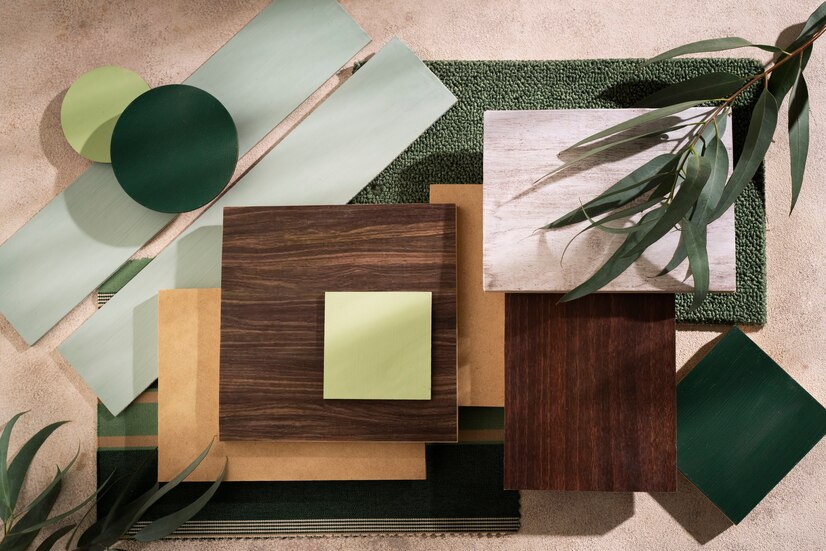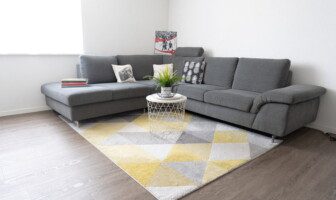
In the ever-evolving tapestry of architecture, where form meets function in a dance of innovation, coatings have transcended their utilitarian origins to become indispensable elements in the architect’s palette. Originally conceived for practical purposes such as surfacing and protection, laminated materials have undergone a metamorphosis, emerging as versatile mediums architects wield with finesse.
This blog post embarks on a journey through the innovative horizons of contemporary architecture, spotlighting how laminates, with their malleability and adaptability, have become not only surface embellishments but essential tools shaping the very essence of modern design.
Dynamic Facades
Dynamic facades, utilising the flexibility of laminates, redefine building aesthetics. Architects imprint vibrant patterns and textures on these versatile materials, turning exteriors into dynamic canvases that blend art and functionality. Beyond visual appeal, laminates enhance sustainability by providing insulation.
The interplay of light and shadow adds depth, making buildings ever-changing art pieces. Additionally, laminates allow for easy modifications, ensuring architecture remains relevant over time. In summary, dynamic laminated facades exemplify the fusion of art and architecture while contributing to sustainability and adaptability.
Sustainable Cladding
Laminates offer an eco-friendly alternative for cladding applications, combining durability with resistance to environmental elements. Crafted from recycled and renewable resources, these materials minimise ecological impact.
With a long lifecycle, laminates reduce waste and contribute to sustainable architecture by lowering the demand for raw materials. Their diverse aesthetic options ensure visually appealing structures that align with eco-conscious design principles. In essence, laminates provide a harmonious blend of practicality and sustainability in construction.
Interactive Interiors
Incorporating laminates with integrated technology allows for the creation of interactive interior spaces. From touch-sensitive surfaces to responsive lighting, laminates can be seamlessly blended with modern technology to enhance user experience within a space.
Furniture Innovation
Laminates have become a cornerstone in modern furniture design, offering versatility that transforms the creative process. Mimicking textures like wood and metal, laminates provide a cost-effective, sustainable alternative, enhancing visual appeal and functionality.
Designers now enjoy the freedom to experiment with textures, colours, and patterns without compromising durability or ease of maintenance. Beyond aesthetics, laminates contribute to environmental sustainability, aligning with the industry’s eco-friendly practices.
In this era of furniture innovation, laminates catalyse pushing creative boundaries, allowing designers to craft aesthetically pleasing and functional pieces that blend artistry with utility. The marriage of design ingenuity and laminate technology continues to shape the evolving landscape of contemporary furniture, offering consumers options that reflect both style and sustainability.
Read Also: 10 Ways To Use Clear Acrylic Bench To Decorate Your Home
Lightweight Structures
The lightweight nature of laminates makes them ideal for creating innovative, structurally sound designs. Architects can experiment with bold shapes and intricate designs without compromising the building’s weight and stability.
Bold Graphic Installations
Laminates provide a canvas for bold graphic expressions. Whether used for wall coverings or flooring, architects can leverage laminates to showcase intricate patterns, inspiring visual interest and adding a layer of storytelling to the space.
Acoustic Solutions
Incorporating laminates with acoustic properties is a game-changer for creating serene and noise-free environments. From offices to residential spaces, laminates can be strategically placed to absorb sound, contributing to a peaceful atmosphere.
Artistic Ceilings
Architects now use laminates to create artistic ceilings that defy traditional design norms. The material’s adaptability allows for incorporating three-dimensional patterns, giving the overhead space a sense of depth and uniqueness.
Adaptable Partitions
The flexibility of laminates makes them an excellent choice for movable partitions. Architects can design spaces adaptable to different needs, allowing for open layouts or private enclosures, depending on the situation.
Sculptural Installations
Laminates can be moulded into various shapes, enabling the creation of sculptural installations. These artistic elements can serve aesthetic and functional purposes, acting as focal points in public spaces or enhancing the overall design narrative.
Seamless Integration With Nature
Laminates that mimic natural materials like stone or wood can seamlessly integrate into architectural designs, promoting a harmonious coexistence with the surrounding environment. This contributes to the aesthetic appeal and aligns with biophilic design principles.
Customisable Workspaces
In office settings, laminates allow for the customisation of workspaces. Architects can use laminates to create a dynamic and motivating work environment, from vibrant desk surfaces to personalised cabinetry.
Resilient Flooring
Laminates with high durability make resilient flooring solutions suitable for high-traffic areas. The material’s resistance to wear and tear ensures that the flooring remains visually appealing even in the face of heavy use.
Energy-Efficient Interiors
Laminates can be engineered to have thermal insulation properties, contributing to the creation of energy-efficient interiors. This is particularly advantageous in regions with extreme climates, where maintaining a consistent indoor temperature is crucial.
Futuristic Retail Spaces
In retail design, laminates create futuristic and visually striking spaces. The material’s ability to reflect modernity and innovation aligns well with the branding strategies of contemporary retail outlets.
Multi-Functional Panels
Architects are leveraging laminates to design multi-functional panels for aesthetic and practical purposes. These panels can act as space dividers, lighting elements, or storage solutions, showcasing the versatility of laminates.
Outdoor Innovation
Laminates engineered for outdoor use have expanded the possibilities for designing exterior spaces. From decking to outdoor furniture, laminates offer a weather-resistant solution that maintains its visual appeal over time.
Invisible Design Elements
Laminates can be used strategically to hide or integrate functional elements seamlessly. Whether concealing lighting fixtures or providing a surface for integrated technology, laminates enable architects to maintain a clean and minimalist aesthetic.
Cultural Expression
Laminates can be customised to showcase cultural motifs and expressions. This is particularly relevant in public buildings, where architects can use laminates to tell a story that resonates with the local community.
Educational Environments
In educational settings, laminates are utilised to create dynamic and engaging spaces. From writable surfaces for collaborative learning to vibrant wall coverings that inspire creativity, laminates contribute to the overall educational experience.
Conclusion
As we navigate the ever-changing landscape of contemporary architecture, laminates emerge as a dynamic and essential material. The 20 creative applications discussed in this blog post underscore the versatility of laminates, showcasing their potential to transform spaces into functional works of art. From dynamic facades to sculptural installations, laminates are not just surface materials; they are integral components that shape the identity and functionality of modern architecture. As architects continue to push boundaries and explore new possibilities, laminates stand ready to play a central role in shaping future buildings.
Read Also:




























